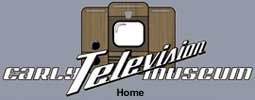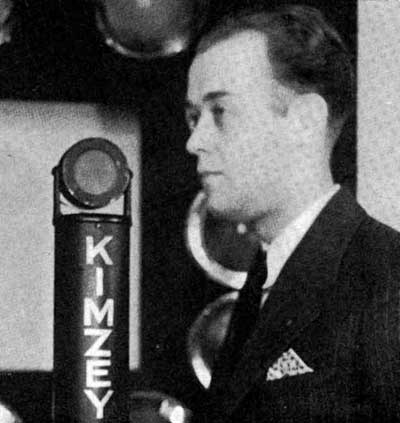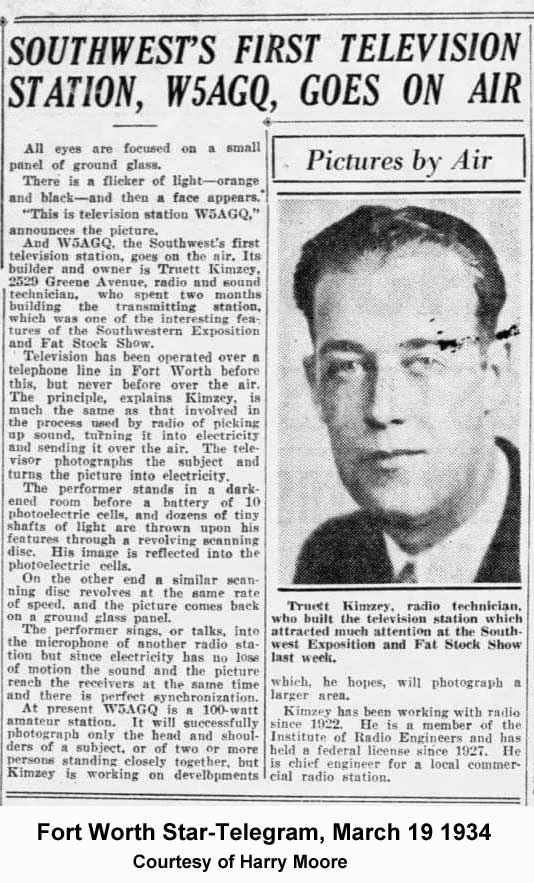Mechanical Television
W5AGO - Fort WorthW5AGO began television transmission using mechanical scanning equipment in March, 1934 in Ft. Worth, Texas. Since all FCC-licensed experimental TV stations had an X in their call sign, W5AGO was probably an amateur radio call sign. According to Mike Shannon, who has written about Dallas television history, the television equipment cost $1500, a substantial investment. By 1934 virtually all mechanical stations in the United States were off the air, so the startup of a mechanical station in 1934 is unusual. Here is more about more early television in Texas and television at the 1936 Texas Exposition. The station was built by Truett Kimzey, a radio and television pioneer in Dallas. Kimzey was one of the first radio/TV engineers in Texas, and his successful career included station ownership and operating a TV repair shop in Fort Worth for many years. His son John Paul currently co-owns the Crouse-Kimzey Company in Fort Worth, a distributor of commercial audio and video equipment. A search of the archives of the Dallas Daily News turned up nothing, though there were articles about several other TV demonstrations and stations from 1930 to 1935. If you have any information on this station or Truettt Kimzey, please contact us. (Thanks to Steve Dichter for the above information) This excerpt is from the book "Texas Signs On, The Early Days of Radio and Television", by Richard Schroder. John Paul Kimzey, Truett Kimzey's son, wrote this:
|


